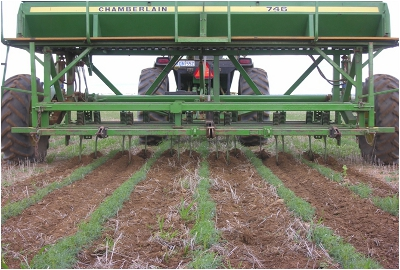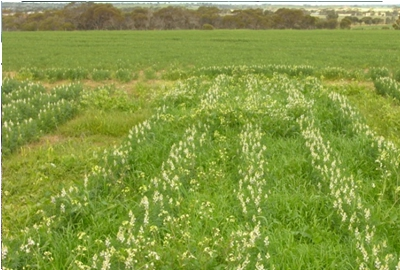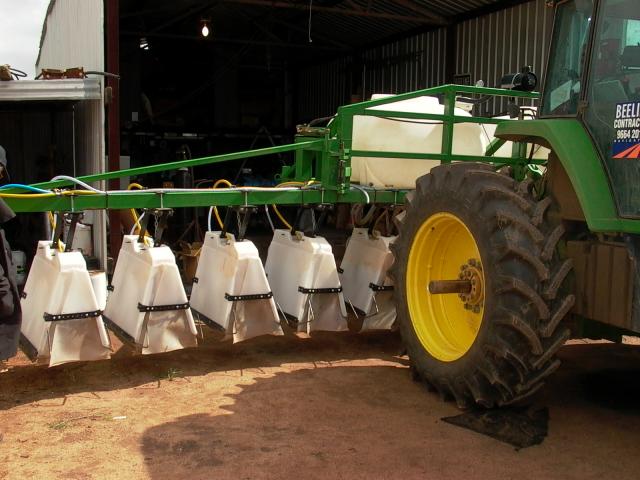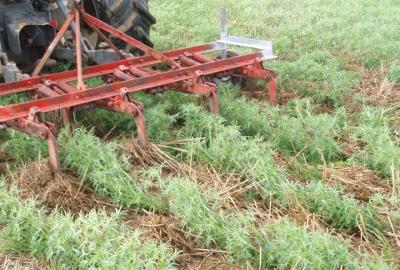Weed control in wide-row cropping

Widening the row spacings allows different methods of weed control to be employed, such as selective chemicals in the on-row zone and non-selective chemical, physical or mechanical methods in the inter-row zone.
Wide-row cropping in Western Australia
Wide-row cropping has been used in Western Australia as a strategy to overcome herbicide resistant wild radish and, to a lesser extent, annual ryegrass, particularly in pulse crops
This tactic uses non-selective (knockdown) herbicides to control weeds in the inter-row space of the crop. In some circumstances inter-row cultivation may be applicable. Band spraying over the crop row allows selective herbicides to control weeds that the shielded sprayer or inter-row cultivation techniques cannot reach. In addition, band spraying effectively reduces the total amount of herbicide used on a per hectare basis, which in turn reduces costs and minimises the potential for herbicide carryover.
Glossary
- Wide rows – crop rows which are 50cm and wider
- Inter-row – the strip of soil between the crop rows
- Crop-row – the strip of soil taken up by the crop
- Shielded spraying – the practice in which shields are used to protect the crop-rows while weeds in the inter-row area are sprayed with a non-selective herbicide
- Band spraying – the practice in which a given area (band) of selective herbicide is applied to weeds in either the crop-row or inter-row only
- Inter-row cultivation – the practice in which weeds in the inter-row space are controlled using tillage equipment). Please note that where retained stubble is dense, it may not be physically possible to carry out inter-row cultivation. Also, inter-row cultivation can stimulate emergence of some weed species.
Inter-row shielded spraying and crop-row band spraying
Keep in mind that the trend towards wide-row planting for a range of crops risks greater reliance on herbicide control to balance declining crop competition. This poses serious problems for the development and management of herbicide resistant weeds.
Issues to consider:
- Shielded spraying allows inter-row application of non-selective herbicides in-crop, which can increase crop yield.
- Band spraying reduces the risk of herbicide resistance development by limiting the application of higher risk selective herbicides over the crop row.
- Herbicide mode of action groups need to be rotated.
- Timing of shielded spraying is important.
- Care must be taken with the set-up and operation of shielded sprayers to minimise spray drift. All shields leak spray drift to some extent.
Inter-row cultivation
Issues to consider:
- Inter-row cultivation gives the opportunity to control weeds without herbicides.
- Timing of inter-row cultivation is critical to ensure maximum levels of weed control. Best control is achieved when the weeds are small.
- Weed control is reduced if the soil is too wet, as the weeds will transplant.
- Heavy stubble cover may preclude the use of inter-row cultivation.
- Inter-row cultivation does not control weeds in the crop row, so an additional tactic must be used for the crop-row weeds.
- Inter-row cultivation cannot be used in conjunction with ground covering stubble mulch techniques, as cultivation reduces the opportunity to maintain the mulch.
- Inter-row cultivation can stimulate emergence of some weed species.




